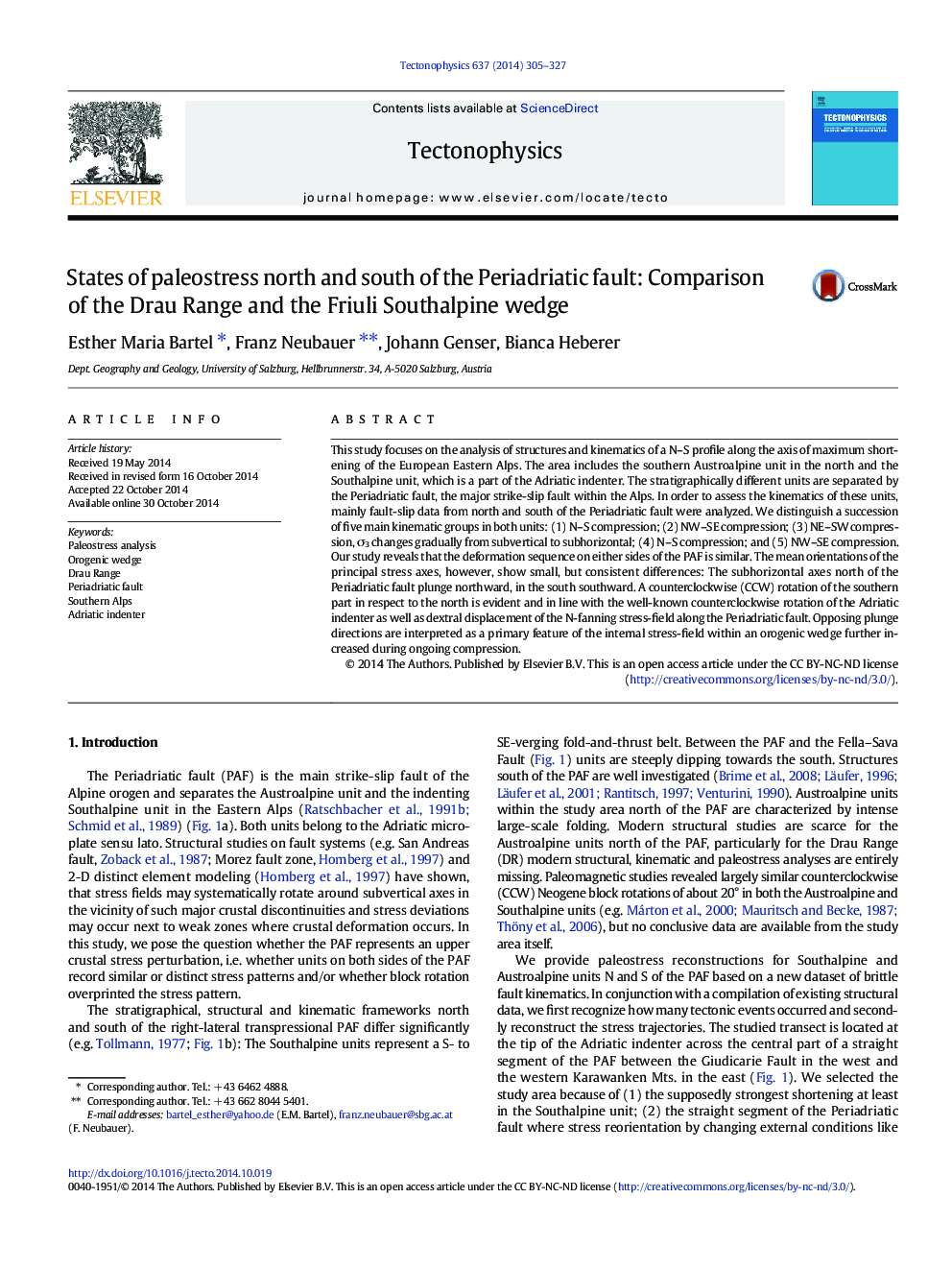| Article ID | Journal | Published Year | Pages | File Type |
|---|---|---|---|---|
| 6433786 | Tectonophysics | 2014 | 23 Pages |
â¢Deformation stages on either side of the Periadriatic fault show large similarities.â¢Kinematic analyses of brittle fault datasets yield 5 successive tectonic regimes.â¢Small differences N vs. S of the principal stress axes (orientation) are visible.â¢A slight, but consistent CCW rotation of Ï1 S of the fault is found.â¢Ï1 N and S of the fault shows opposing plunge directions.
This study focuses on the analysis of structures and kinematics of a N-S profile along the axis of maximum shortening of the European Eastern Alps. The area includes the southern Austroalpine unit in the north and the Southalpine unit, which is a part of the Adriatic indenter. The stratigraphically different units are separated by the Periadriatic fault, the major strike-slip fault within the Alps. In order to assess the kinematics of these units, mainly fault-slip data from north and south of the Periadriatic fault were analyzed. We distinguish a succession of five main kinematic groups in both units: (1) N-S compression; (2) NW-SE compression; (3) NE-SW compression, Ï3 changes gradually from subvertical to subhorizontal; (4) N-S compression; and (5) NW-SE compression. Our study reveals that the deformation sequence on either sides of the PAF is similar. The mean orientations of the principal stress axes, however, show small, but consistent differences: The subhorizontal axes north of the Periadriatic fault plunge northward, in the south southward. A counterclockwise (CCW) rotation of the southern part in respect to the north is evident and in line with the well-known counterclockwise rotation of the Adriatic indenter as well as dextral displacement of the N-fanning stress-field along the Periadriatic fault. Opposing plunge directions are interpreted as a primary feature of the internal stress-field within an orogenic wedge further increased during ongoing compression.
Graphical abstractDownload full-size image
